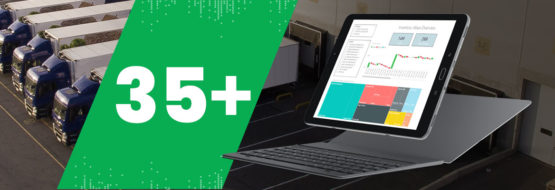Exploring the CFO’s Role in Business Continuity

According to a recent study by the US Chamber of Commerce, 43 percent of small businesses believe they will be forced to shut down permanently if the current coronavirus crisis is not resolved within six months. Though small businesses may take the biggest hits, enterprise-level businesses are also feeling the strain.
In just a few short weeks, many companies’ sales forecasts have been rendered obsolete. Supply chains have been disrupted. Receivables from reliable customers have been rendered questionable. Governments are scrambling to support employers with stimulus legislation and loan packages. Now more than ever, CFOs play a critical role in the survival of their organizations.
Business continuity planning has traditionally been the domain of IT and operations. In the new reality, though, continuity planning is no longer about local or regional disasters such as hurricanes or floods. In the current environment, It has become a matter of whether some businesses will outlast the crisis, or end up closing their doors for good. Responsibility for business continuity is moving to the C-suite, and CFOs play a critical role.
How can CFOs help to steer their organizations through turbulent waters? Here are some essentials:
Establish A War Room
The concept of “war room methodology” in business is not new. It’s already a familiar concept to project managers and Six Sigma practitioners. In times of crisis, the war room approach truly shines.
PwC highlights some of the key elements of this methodology. Bring together leaders from different areas of your organization, hold focused stand-up meetings at the start of each day, and collect key information on a whiteboard in the designated war room space (even if that space is now virtual, with one person being designated as the keeper of the whiteboard). Frequent updates based on real-time data provide an up-to-the-minute view of key metrics. Clear visibility to key metrics keeps the team focused and encourages clear, concise daily communication.
By adopting the war room approach, business leader can clearly establish that the C-suite owns business continuity, and they can build a framework for navigating turbulent times from a strategic perspective.
Re-Assess Your Risks
It’s time to take a fresh look at virtually every aspect of your organization. Start with key make-or-break assumptions such as sales forecasts, receivables, cash flow, and the reliability of your supply chain.
What do your contracts say about canceling orders? Will you be obligated to pay for services you no longer need? Do your customers have similar rights under your contract with them? Do your agreements contain force majeure language that will release you (or your customers or vendors) from contractual obligations? At a time when most businesses are experiencing disruption, the specific language in your contracts could be very important. Take this time to review it and understand where you have some exposure.
Some of your risks may be less obvious. Stay in communication with your key trading partners, and consider performing an ongoing risk assessment on those companies. Will those trading partners remain operational? How will workforce or supply chain issues impact them? Do they have continuity plans in place? CFOs who keep a close watch on such risks will be better prepared to respond when adverse events take place.
Focus on Cash Flow
As money stops flowing through the economy, receivables are likely to be at a higher risk than in the past. That fact, combined with lagging sales and tightening credit, will result in cash flow challenges for many companies.
Now is the time to look at payment terms and lines of credit. Stay in touch with vendors, customers, and investors. Evaluate your inventory levels and determine whether inventory quantities should be dialed back for certain SKUs.
Cash is still king, so if liquidity could be a challenge for your business, make it one of your key metrics. The ability to monitor cash flow based on real-time data will help finance teams stay on top of the cash flow situation. This then enables the executive team to monitor it on a daily basis through war room meetings and make the necessary plans and decisions.
Forecast Early and Often
Many companies are seeing large drops in revenue. Forecasting accurately is significantly more difficult in turbulent times. Your organization’s ability to respond quickly will depend on how rapidly you can assess changes in the world around you. Forecasts should change as new information becomes available and as the cascading effects of the economic slowdown start to become clear. CFOs should develop systems that enable their stakeholders to get up-to-the-minute forecasts based on the latest available information.
Companies that already have strong financial intelligence systems in place will have an advantage. Finance teams with real-time access to all of their business information will be able to run multiple forecasts without performing repetitive manual tasks, and without the inevitable errors that such manual processes introduce. These forecasts should then be evaluated daily In the war room. Rapid-forecasting capabilities ensure that your C-suite team can see and plan for the road ahead.
Strategize and Pivot
While it’s true that disruption creates risk, it also creates opportunity, and CFOs are in a unique position to inform and educate business leaders as they navigate through this crisis.
Media outlets have been quick to celebrate stories of manufacturers retooling their factories to fight the coronavirus pandemic. For most businesses, though, such transitions are less obvious and involve substantially higher risk.
Nevertheless, it’s important for C-level executives to be thinking strategically and revisiting some basic assumptions about the business. How have your customers’ priorities changed? Are there new ways that you can serve those customers? How can your company’s assets be re-deployed to address those needs?
Finance teams are in a unique position to help executives answer those questions. By combining existing business data with external information and forward-looking assumptions, leaders in finance and accounting have a distinct role in developing “what if” scenarios and bringing an informed data-driven perspective to some of the big decisions with which businesses in today’s environment are faced.
With flexible reporting tools, CFOs can provide self-service capabilities that enable their teams to pull together real-time data from multiple sources and analyze it quickly. In a time of crisis, robust reporting and analysis tools are indispensable.
When the road ahead is uncertain, visibility matters more than ever. We all hope that the current crisis will come to an end soon, but the lessons to CFOs are clear. An agile finance organization that can act quickly and think strategically will be indispensable in weathering this storm, or any future uncertainty. Clear visibility to enterprise data is foundational to that capability.








